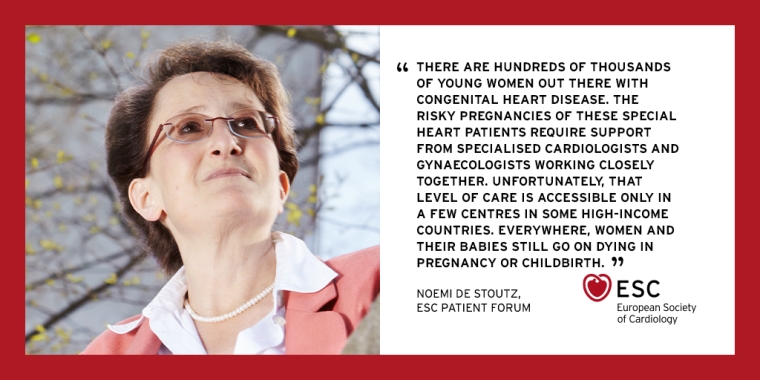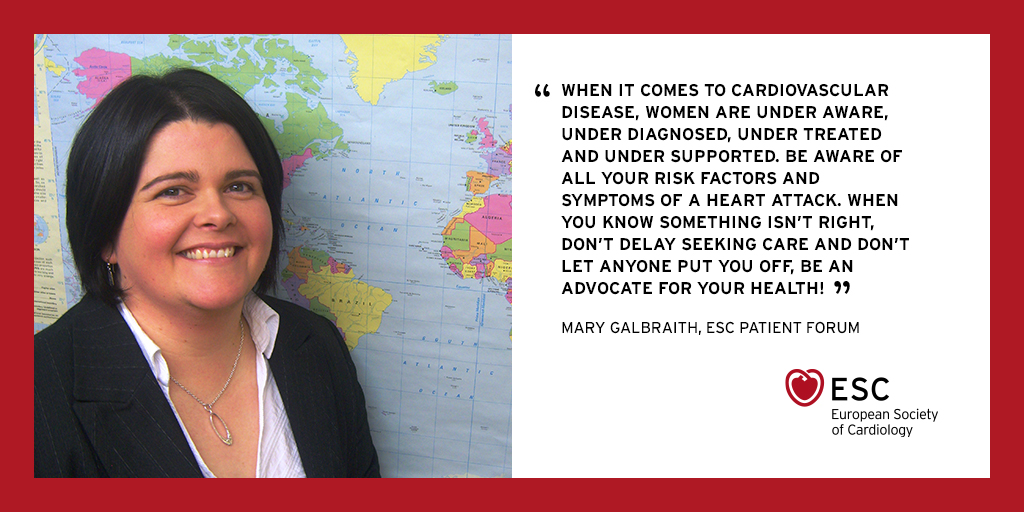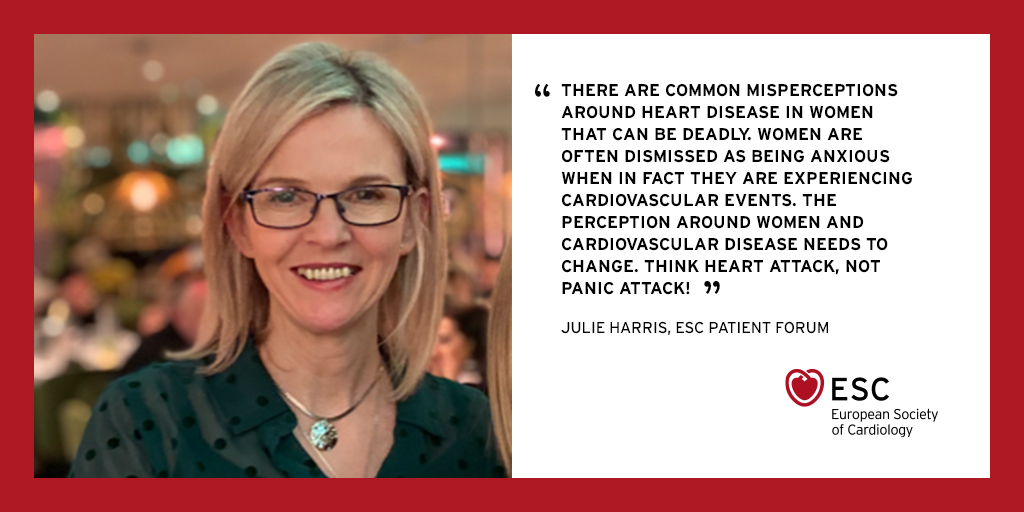ESC Advocacy Committee Chair, Prof. Hugo Katus: “It is prime time to remind people of the life-threatening risk of cardiovascular disease in women for many reasons. Cardiovascular disease kills more women than men, and even in women aged less than 65 years more than twice as many women die of cardiovascular diseases than of breast cancer. Unfortunately, cardiovascular mortality in women is - in contrast to cancer - not on a decline but has stagnated or increased and many women live with chronic, non-curable cardiovascular diseases. Therefore, more awareness for cardiovascular diseases is urgently needed not only in public or by health care professionals but most importantly also by women of all ages.”
Closing the gaps in the cardiovascular care of women: ESC Statement
The European Society of Cardiology (ESC) welcomes the publication of the 'The Lancet women and cardiovascular disease Commission: reducing the global burden by 2030' report, which outlines the gaps in cardiovascular disease research, prevention, treatment, and access to care for women.
Commenting on the Lancet Commission’s report, Professor Barbara Casadei, ESC Past-President said: “The ESC calls for reducing the gap in the prevention, diagnosis and treatment of CVD between men and women. More research, greater participation of women in clinical trials and more policy attention to CVD in women are necessary if we aim to achieve gender equality”.
CVD is the leading cause of death in women, both in Europe and worldwide. Yet, compared to men, women with CVD are typically underdiagnosed and undertreated. Why?
- Differences in the aetiology and clinical presentation of CVD leading to misdiagnosis and dismissal of symptoms as anxiety-related. For instance, women are more likely to present with myocardial infarction/ischemia in the absence of obstructive coronary artery disease (MINOCA/INOCA), with coronary artery dissection or Takotsubo cardiomyopathy. This results in women being more often misdiagnosed than men.
- Under-representation of women in clinical trials. The enrolment of women in CVD clinical trials funded by the NHLBI was 27% between 1997 and 2006. In European CVD clinical trials, the proportion of women enrolled was even lower1.
- Insufficient awareness among women and physicians of sex-specific symptoms and presentation of CVD. A study recently presented at the ESC’s Acute CardioVascular Care 2021 congress showed that 41% of women wait more than 12 hours before seeking help in case of chest pain2.
- Huge disparities in CVD morbidity and mortality across Europe. For example, a woman in Lithuania is 13 times more likely to die from heart disease than a woman in France, while for men the gap is 9 times3.
It is time to act and address the gender gap in CVD
The ESC supports the recommendations put forward by The Lancet Commission to improve research, prevention, and treatment of CVD in women.
More specifically the ESC calls for:
Europe-wide harmonised data collection
To better understand the prevalence, diagnosis, and management of CVD in women across different geographies, the ESC has taken the initiative to evaluate prevalence and outcomes of cardiovascular conditions which are more prevalent in women by setting up registries on pregnancy and CVD, and on peripartum cardiomyopathy within our EURObservational Research Programme. In addition, to document and improve care of patients with common CVD, the ESC has initiated the EuroHeart project, which is based on a collaboration of national registries and which provides a robust infrastructure for undertaking both high-quality observational studies and pragmatic clinical trials. Greater support for comprehensive and harmonised data collection in patients with CVD is needed to improve cardiovascular care in women and across regions.
Identification and removal of barriers limiting women’s participation in clinical trials
Women have traditionally been under-represented in CVD clinical trials; this has limited our knowledge of the efficacy and safety of many therapies in women compared with men which, in turn, has resulted in underutilisation of both preventative and treatment interventions for CVD in women. More involvement of women in clinical trials should urgently be promoted; research design and protocols should better address sex-specific aspects and outcomes.
Greater investment in research addressing women cardiovascular health
A better understanding of cardiovascular risk in women is essential to identify those at higher risk early and ensure that they are taken in charge adequately. The new EU Framework Programme for Research, Horizon Europe, should support investment in research focusing on women cardiovascular health, including maternal health, leading to better prevention and care.
Support for awareness-raising activities
Targeting the public, and, specifically, women to ensure that risk factors and symptoms of CVD in women are recognised and reported.
Specific educational activities for healthcare professionals
to ensure they are better equipped to assess risk and identify signs and symptoms of CVD in women, with the aim to prevent the current underutilisation of guidelines recommendations in female patients. The absence of sex-specific recommendations does not justify the underuse of existing prevention and treatment strategies in women with CVD.
Increase the number of women in the cardiology profession
Gender inequality does not just affect patients but also remains a significant problem within the cardiology profession. Women make up the majority of medical graduates in many countries, but they are under-represented in cardiology and nearly absent in senior/leadership positions. As diversification of leadership promotes innovation and advancement in patient care, research, and health care delivery, changing the culture in cardiology should be a priority.

3 European Society of Cardiology, Atlas of Cardiology
ESC Patient Forum Testimonials
ESC Board Member and Councillor for the Patient Forum and Women in the ESC, Prof. Lina Badimon, comments, “It is alarming to see that more and more women under the age of 65 are suffering or even dying from CVD. Due to family and/or work commitments, these women often put the health and needs of others before their own and seek help too late. However, as the stories of our ESC Patient Forum members show, they also often do not fit the profile of the "typical" heart attack patient and are turned away by doctors to whom they appear young and healthy. We need to step up our efforts to prevent and treat heart disease in young women!”

Read Noemi De Stoutz' testimonial >

Read Mary Galbraith's testimonial >

Read Julie Harris' testimonial >

 Our mission: To reduce the burden of cardiovascular disease.
Our mission: To reduce the burden of cardiovascular disease.